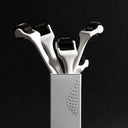In today's world, shampoo is a ubiquitous part of our haircare routine, but it wasn't always so readily available. Before the introduction of commercial shampoos, people had to rely on various natural and traditional methods to cleanse and nourish their hair. From plant-based concoctions to household ingredients, our ancestors found creative ways to keep their locks clean and healthy.
Table of content
What Did People Use Before Shampoo?
Before the advent of modern shampoos, people used a variety of natural ingredients and traditional methods to cleanse and care for their hair, including:
- Herbs and plant extracts
- Natural soaps and oils
- Egg and milk mixtures
- Ash and clay
- Honey and vinegar rinses
Herbs and Plant Extracts
Many cultures around the world have a long history of using herbs and plant extracts for haircare. For instance, Native Americans used soaproot (Chlorogalum pomeridianum) and amole (Chlorogalum spp.) as natural cleansers, while the ancient Egyptians relied on herbs like henna, chamomile, and hibiscus to clean and condition their hair.
Natural Soaps and Oils
Before the advent of synthetic detergents, people used natural soaps derived from plant oils and animal fats. Olive oil, for example, was a popular choice for cleansing and conditioning hair in the Mediterranean region. Similarly, in India, shikakai (Acacia concinna) and reetha (Sapindus mukorossi) were traditionally used as natural hair cleansers.
Egg and Milk Mixtures
Egg and milk mixtures were popular natural cleansers in various cultures. The proteins and fats in eggs and milk helped to nourish and condition hair while providing a gentle cleansing action. These mixtures were often combined with other natural ingredients, such as honey or herbal extracts, for added benefits.
Ash and Clay
In some traditions, ash from burned plants or clay was used as a gentle abrasive to help remove dirt, excess oils, and buildup from the hair and scalp. For example, Native Americans used ash from burned soaproot or yucca plants, while certain African cultures relied on clay-based mixtures for cleansing.
Honey and Vinegar Rinses
Honey and vinegar were commonly used as natural hair rinses to remove buildup and add shine. Honey's humectant properties helped to moisturize the hair, while vinegar's acidity helped to clarify and balance the scalp's pH levels.
As your leading source for hair health information over the past 4 years, we never compromise on accuracy. When it comes to your health, you deserve information you can truly rely on - and earning your trust is our top priority.
Here's how Scandinavian Biolabs ensures every piece of content meets the highest standards of accuracy and integrity:
- Credentialed Experts: Our reviewers are actively practicing doctors and medical researchers
- Stringent Reviews: Content undergoes rigorous editing by subject specialists and review by a practicing doctor.
- Evidence-Based: We rely on well-established research from trusted scientific sources like peer-reviewed journals and health authorities.
- Full Transparency: Our editorial standards, writer credentials, reviewer credentials, correction process, and funding are all publicly documented.
- Independent Voice: While we do promote products, we operate in a vacuum to business operations. Our main goal is just an unwavering commitment to providing medically-sound guidance.
You can count on Scandinavian Biolabs to consistently deliver the trustworthy health information you deserve. Read our Editorial Standards.
The Evolution of Shampoo
While these natural methods were effective for their time, the development of modern shampoos brought about a more convenient and standardized approach to haircare. The earliest commercial shampoos were introduced in the late 19th century, consisting of soap-based formulas made from ingredients like sodium hydroxide, laurel oil, and fragrance.
Over time, shampoo formulations evolved to include synthetic detergents, such as sodium lauryl sulfate (SLS) and sodium laureth sulfate (SLES), which provided better cleansing properties and foaming action. Today, shampoos come in a wide variety of formulations tailored to different hair types and needs, incorporating various natural and synthetic ingredients.
The Resurgence of Natural Haircare
In recent years, there has been a growing interest in returning to natural and more sustainable haircare methods, driven by concerns over the potential adverse effects of synthetic ingredients and a desire for eco-friendly alternatives. This has led to a resurgence in the use of many traditional natural cleansers and haircare products, such as shampoo bars, herbal rinses, and clay-based cleansers.
While modern shampoos offer convenience and efficient cleansing, many people are rediscovering the benefits of natural ingredients and embracing a more holistic approach to haircare. By combining traditional wisdom with modern scientific knowledge, we can find a balance between effective cleansing and nourishing our hair in a sustainable and environmentally-friendly manner.
Conclusion
Before the advent of commercial shampoos, people relied on a variety of natural ingredients and traditional methods to cleanse and care for their hair. From herbs and plant extracts to natural soaps, oils, egg and milk mixtures, ash, clay, honey, and vinegar rinses, our ancestors found creative and resourceful ways to keep their locks clean and healthy. While modern shampoos offer convenience, the resurgence of natural haircare has encouraged many to revisit these time-honored traditions and embrace a more sustainable and holistic approach to haircare.
Tired of seeing more hair in the shower drain than on your head?
Bio-Pilixin® Activation Serum is a clinically tested, drug-free approach to combat hair loss and promote new growth. Our unique formula, with plant growth factors derived from stem cell technology, nourishes hair follicles and extends the hair growth phase.
Here's what Bio-Pilixin can do for you:
- Help reduce hair loss by 93% (clinically tested!)
- Experience thicker, denser hair after 150 days
- Safe and gentle for everyday use
- Botanical, vegan ingredients you can feel good about
97% of users see results, and 85% prefer us over other products.
Read more:






